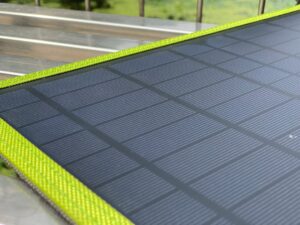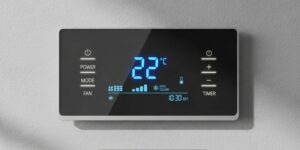When a homeowner discovers a leak, the first step is to identify its source. This can often be a challenging task, as water can travel along beams and walls, making it difficult to pinpoint the exact location of the problem. Homeowners should begin by examining the areas directly above where the leak is observed.
This could involve checking the roof, as well as any plumbing fixtures or appliances that may be located nearby. A thorough inspection of the roof is essential, as leaks can originate from damaged shingles, cracked tiles, or even from the seams where different roofing materials meet. In addition to inspecting the roof, it is also important to consider other potential sources of leaks.
For instance, if the leak is occurring near a chimney or vent, it may be due to improper sealing or flashing around these structures. Homeowners should also take into account seasonal factors, such as heavy rainfall or melting snow, which can exacerbate existing issues. By systematically eliminating potential sources of the leak, homeowners can narrow down the possibilities and focus their repair efforts more effectively.
Key Takeaways
- Identifying the Source of the Leak: Look for water stains, mold, or mildew to pinpoint the location of the leak.
- Checking for Damaged or Missing Roofing Materials: Inspect the roof for cracked, curled, or missing shingles, as well as damaged flashing.
- Inspecting Flashing and Seals: Check for loose or damaged flashing around chimneys, vents, and skylights, and inspect seals for any signs of wear or deterioration.
- Assessing the Condition of Gutters and Downspouts: Ensure that gutters and downspouts are clear of debris and properly directing water away from the roof.
- Examining the Attic for Signs of Water Damage: Look for water stains, mold, or mildew in the attic to identify any leaks from the roof.
Checking for Damaged or Missing Roofing Materials
Identifying and Addressing Roof DamageInspecting Roofing Materials
Once the source of the leak has been identified, the next step involves checking for any damaged or missing roofing materials. This is a crucial part of the repair process, as compromised roofing can lead to further water intrusion and damage if not addressed promptly. Homeowners should carefully inspect shingles for signs of wear and tear, such as curling edges, cracks, or granule loss.
Replacing Missing or Damaged Components
Missing shingles can create vulnerable spots on the roof that allow water to seep through, making it imperative to replace them as soon as possible. In addition to shingles, homeowners should also examine other roofing components, such as tiles and metal sheets. Any signs of rust or corrosion on metal roofs should be addressed immediately, as these issues can lead to leaks over time.
Removing Debris and Preventing Future Leaks
Furthermore, it is essential to check for any debris that may have accumulated on the roof, such as leaves or branches, which can trap moisture and contribute to deterioration. By ensuring that all roofing materials are in good condition, homeowners can significantly reduce the risk of future leaks.
Inspecting Flashing and Seals

Flashing and seals play a vital role in protecting a home from water intrusion. These components are typically installed around chimneys, vents, and other roof penetrations to create a watertight barrier. Homeowners should inspect flashing for any signs of damage or deterioration, such as rust spots or gaps where water could enter.
If flashing is found to be compromised, it may need to be replaced or resealed to ensure proper protection against leaks. Seals around windows and doors are equally important in preventing water from entering a home. Over time, seals can become brittle and cracked due to exposure to the elements.
Homeowners should check for any visible gaps or signs of wear in these areas and consider applying new caulk or sealant where necessary. By maintaining both flashing and seals, homeowners can create a robust defense against leaks and protect their homes from potential water damage.
Assessing the Condition of Gutters and Downspouts
| Location | Condition | Issues |
|---|---|---|
| Roof Gutters | Good | None |
| Downspouts | Fair | Clogged |
| Drainage System | Poor | Leakage |
Gutters and downspouts are essential components of a home’s drainage system, directing water away from the roof and foundation. If these systems are clogged or damaged, they can lead to water pooling on the roof or overflowing near the foundation, increasing the risk of leaks. Homeowners should regularly assess their gutters for debris buildup, such as leaves and twigs, which can obstruct water flow.
Cleaning gutters at least twice a year is recommended to ensure they function properly. In addition to cleaning, homeowners should also inspect downspouts for any signs of damage or blockages. Downspouts should direct water away from the foundation at least six feet to prevent moisture from seeping into the basement or crawl space.
If downspouts are not functioning correctly, homeowners may need to consider extending them or installing additional drainage solutions to protect their property from water damage.
Examining the Attic for Signs of Water Damage
The attic is often an overlooked area when it comes to identifying leaks and water damage. However, it is crucial for homeowners to examine this space thoroughly for any signs of moisture intrusion. Indicators of water damage in the attic may include stained insulation, mold growth, or damp wood beams.
If any of these signs are present, it is essential to address them promptly to prevent further deterioration and potential health hazards associated with mold. In addition to visible signs of damage, homeowners should also pay attention to any musty odors that may indicate hidden moisture issues. Proper ventilation in the attic is vital for preventing condensation buildup, which can lead to mold growth and structural damage over time.
Homeowners should ensure that vents are clear and functioning correctly to maintain a healthy attic environment.
Repairing the Leak

Assessing the Damage
Once the source of the leak has been identified and assessed, it is time for homeowners to take action and repair the issue. Depending on the severity of the leak and the materials involved, repairs may range from simple patching to more extensive work requiring replacement materials.
DIY Repairs for Minor Leaks
For minor leaks caused by damaged shingles or flashing, homeowners can often perform repairs themselves using roofing cement or sealant to fill in gaps and cracks.
When to Consult a Professional
For more significant issues that involve structural damage or extensive water intrusion, it may be necessary to consult with a professional contractor. They can provide expert guidance on the best course of action and ensure that repairs are completed safely and effectively.
Timely Repairs are Crucial
Regardless of the approach taken, timely repairs are essential in preventing further damage and maintaining the integrity of the home.
Preventing Future Leaks
Preventing future leaks requires ongoing maintenance and vigilance on the part of homeowners. Regular inspections of roofing materials, flashing, seals, gutters, and downspouts are essential in identifying potential issues before they escalate into significant problems. Homeowners should establish a routine maintenance schedule that includes cleaning gutters, checking for damaged materials, and inspecting seals around windows and doors.
Additionally, investing in high-quality roofing materials and professional installation can significantly reduce the likelihood of leaks occurring in the first place. Homeowners should also consider upgrading insulation in their attics to prevent condensation buildup during colder months. By taking proactive measures and staying informed about potential risks, homeowners can protect their properties from future leaks and associated damages.
Calling a Professional for Help
While many homeowners may feel confident tackling minor repairs themselves, there are instances when calling a professional is necessary. Complex roofing issues or extensive water damage often require specialized knowledge and skills that only experienced contractors possess. Professionals can conduct thorough inspections and provide accurate assessments of damage while recommending appropriate repair solutions.
Moreover, hiring a professional ensures that repairs are completed safely and in compliance with local building codes. This not only protects the homeowner’s investment but also provides peace of mind knowing that the work has been done correctly. In cases where leaks are persistent or difficult to diagnose, seeking professional assistance is often the best course of action for ensuring long-term protection against water damage.
If you are dealing with a leaky roof or ceilings, it is important to address the issue promptly to prevent further damage to your home. One helpful article that may interest you is “What is the Difference Between Retrofit and Replacement Windows?”. This article discusses the various options available for upgrading your windows to improve energy efficiency and enhance the overall look of your home. By understanding the differences between retrofit and replacement windows, you can make an informed decision on how to best protect your home from leaks and other potential issues.
FAQs
What are the common causes of a leaky roof or ceilings?
Some common causes of a leaky roof or ceilings include damaged or missing shingles, clogged gutters, cracked flashing, and improper installation of roofing materials.
How can I identify a leaky roof or ceilings?
Signs of a leaky roof or ceilings include water stains on the ceiling or walls, peeling paint or wallpaper, mold or mildew growth, and dripping water during rainstorms.
What should I do if I have a leaky roof or ceilings?
If you have a leaky roof or ceilings, it is important to address the issue promptly. You can start by inspecting the roof for any visible damage and clearing out any clogged gutters. It is also advisable to contact a professional roofing contractor to assess and repair the damage.
How can I prevent a leaky roof or ceilings?
To prevent a leaky roof or ceilings, it is important to regularly inspect and maintain your roof. This includes keeping gutters clean, replacing damaged shingles, and addressing any signs of wear and tear promptly. It is also advisable to have your roof inspected by a professional on a regular basis.






